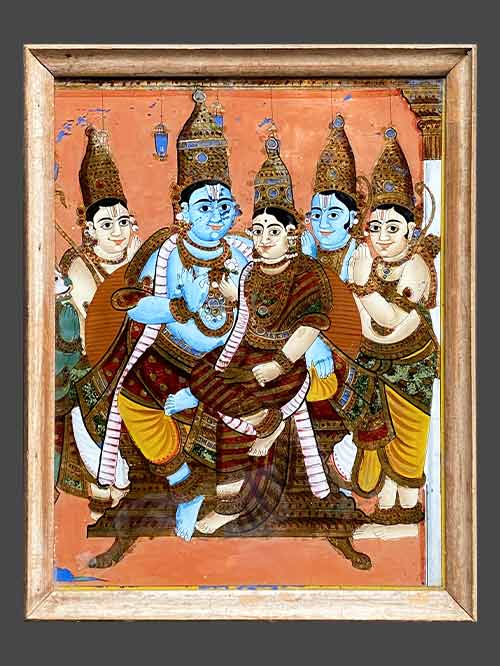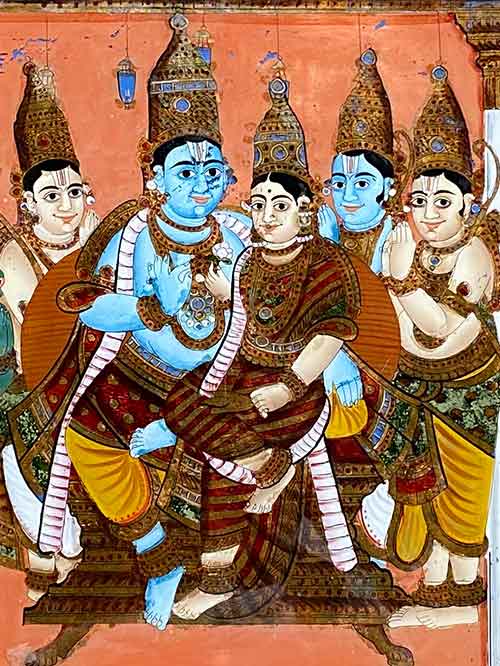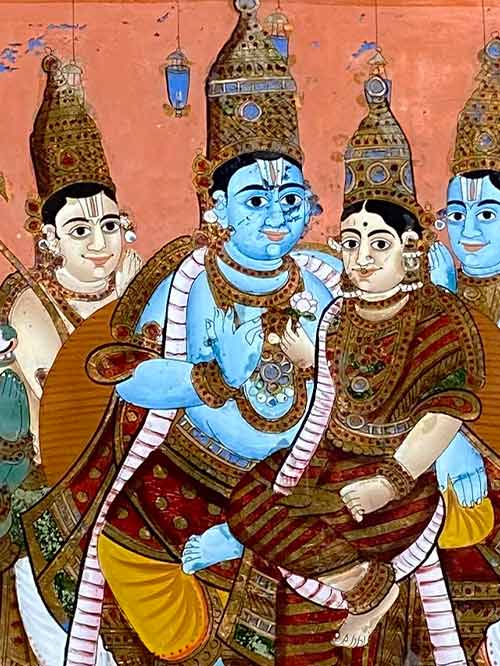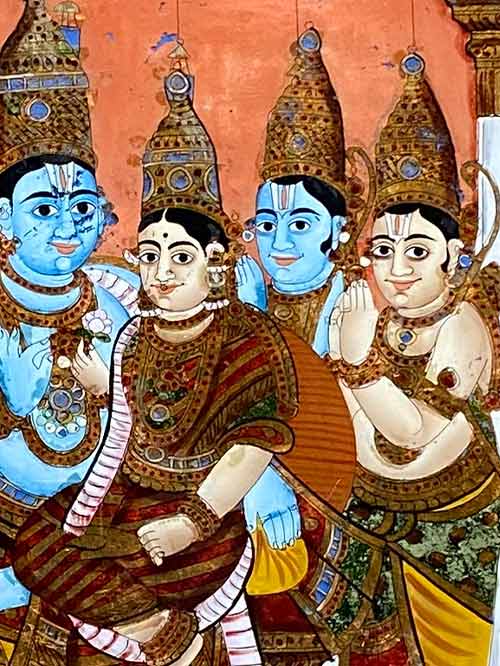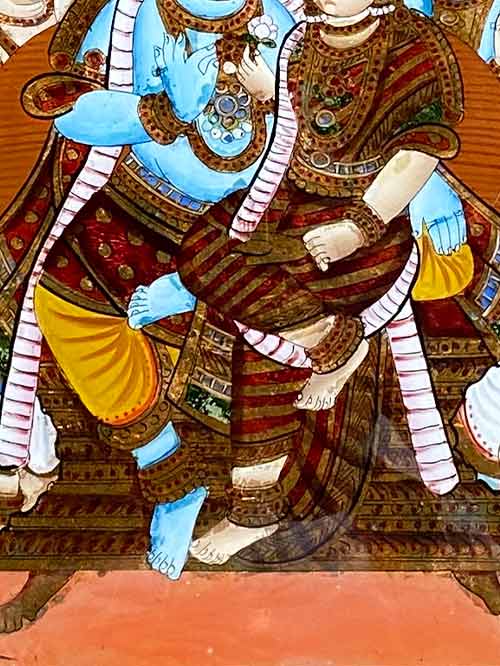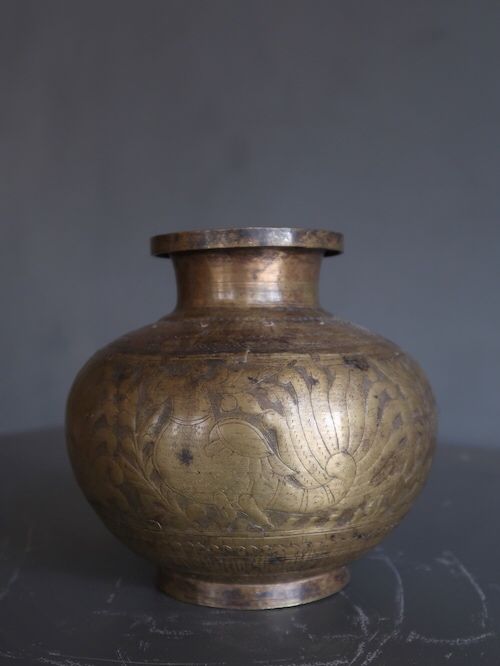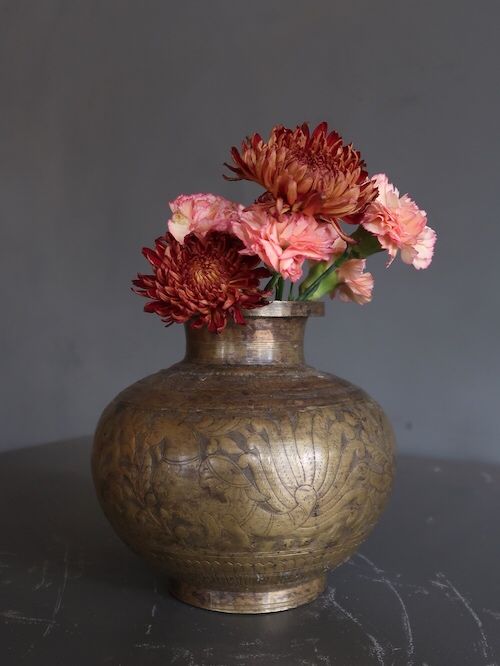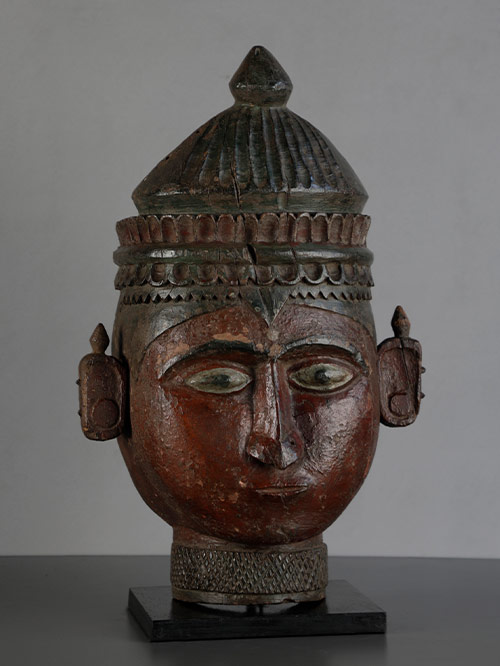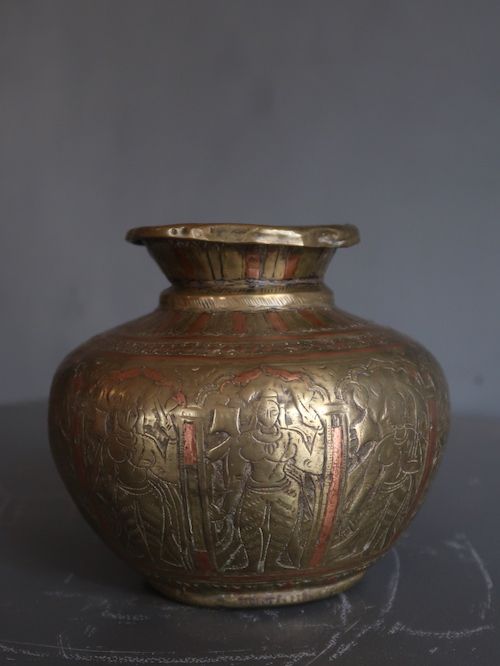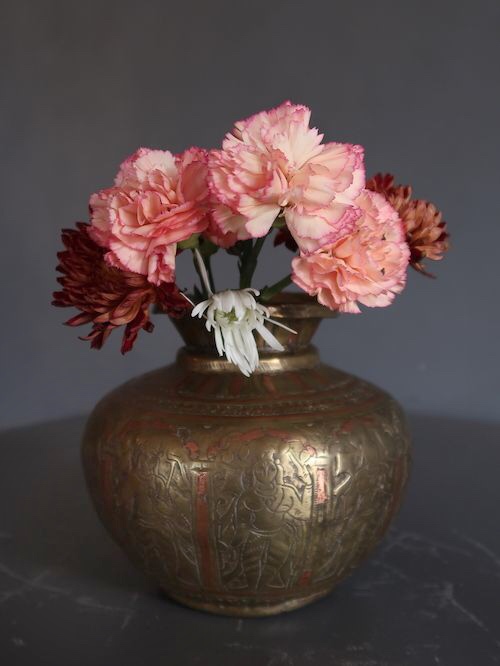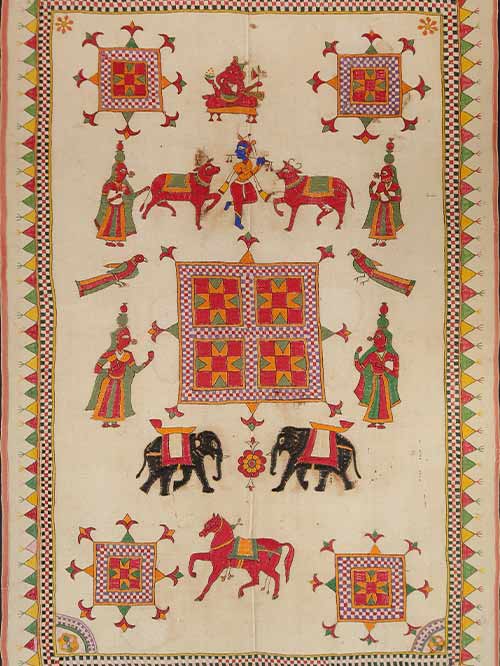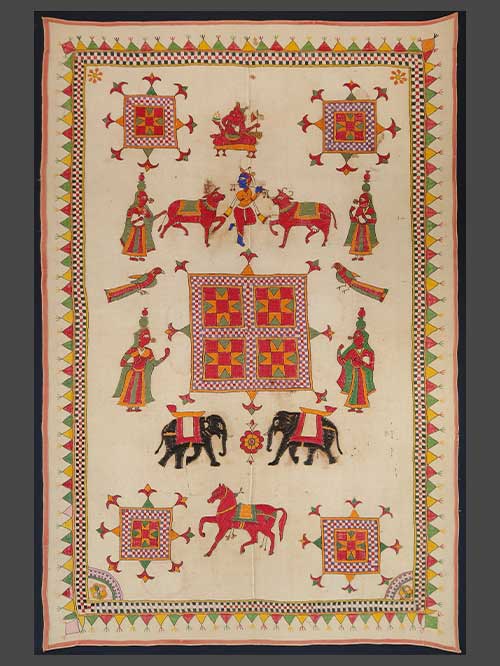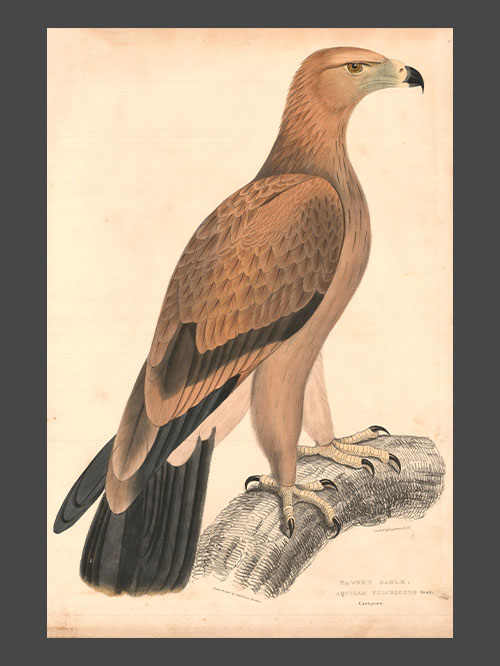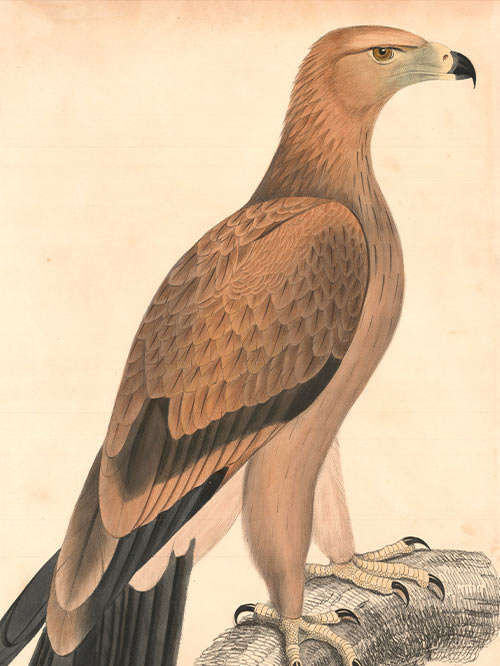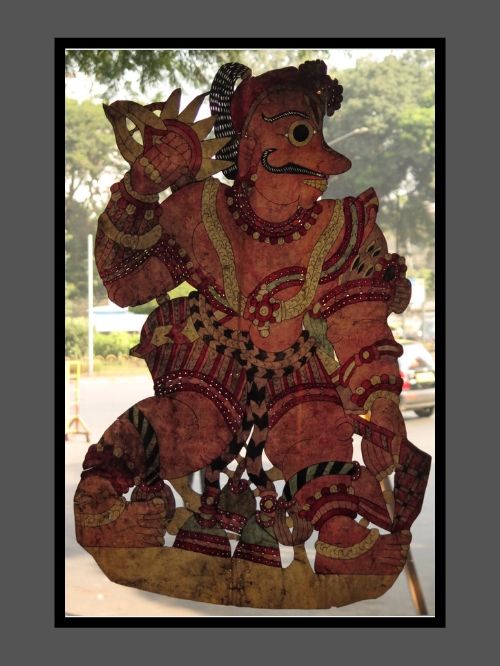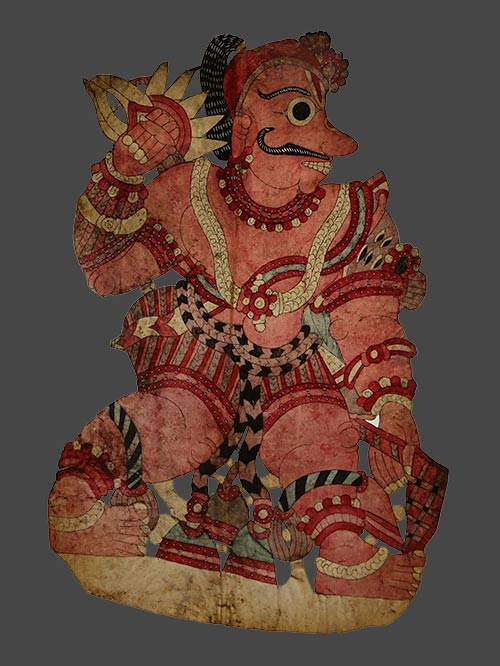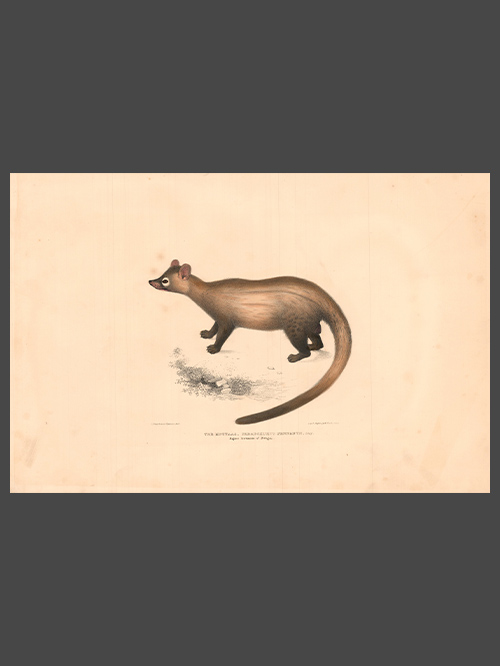Tanjore (South India)
reverse painting on glass
The central group consists of Rama seated in lalitasana on a gilded throne with Sita on his lap. Lakshmana stands immediately behind him to the left; a blue-complexioned Bharata and Shatrugna stand behind Sita on the right. Rama, the hero of the Hindu epic Ramayana, was a king of Ayodhya and is regarded as an ideal ruler and a paragon of virtue. He is considered an avatar of Lord Vishnu. Rama’s journey portrays his unwavering devotion to his wife Sita and his ultimate triumph over the demon king Ravana.
Reverse glass paintings were introduced into India the late 18th century from China by way of the China Trade. Indian artists adopted the technique of reverse glass painting partly on account of its novelty and also because it was a relatively inexpensive medium which could produce rich effects. The technique proved extremely popular and soon spread through western and southern India and even to former provincial Mughal capitals of Oudh, Murshidabad.
In Tanjore – a small state with an old art tradition- a distinctive school of glass painting developed in the early 19th century and continued for more than a hundred years. The style was essential Indian – it tended to repeat patterns of regional painting: images of deities, portraits and themes form the ancient myths, secular themes such as portraits of kings or nobles, courtesans and musicians. The colour was rich and the style bold and defiant. The subjects were clearly presented with a certain opulence and glamour.
Framed Size (cms): 48.25(H) x 38(W)
Framed Size (inches): 19(H) x 15(W)

